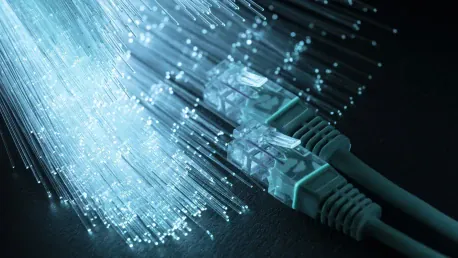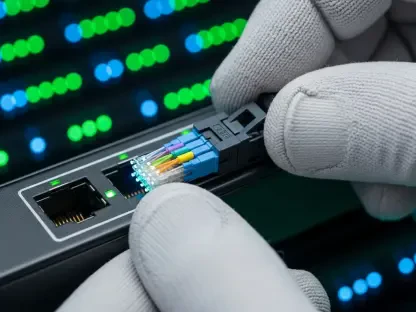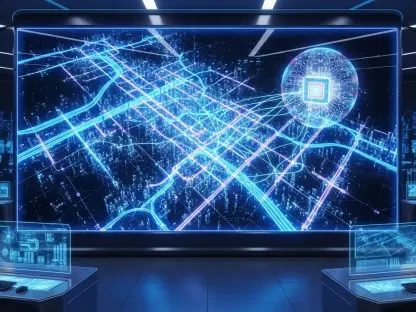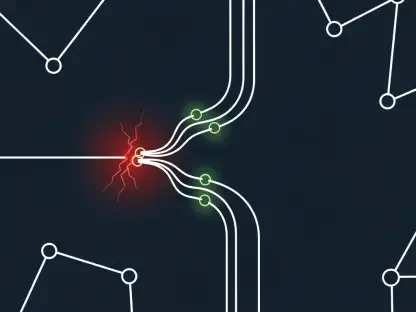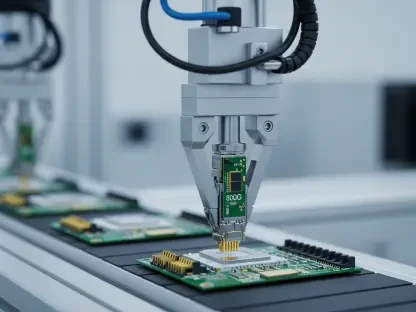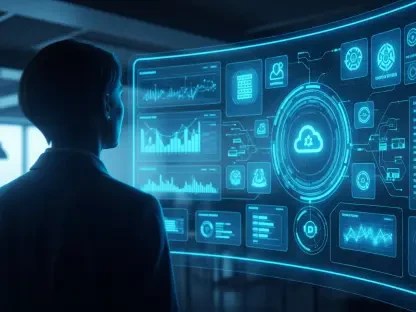As the technological landscape evolves, data centers are grappling with the mounting pressures brought about by the rapid expansion of artificial intelligence (AI). These modern marvels of data processing are increasingly in need of efficient, high-speed, and reliable connectivity solutions. Corning is one of the front runners aiming to address this by transforming the backbone of data centers—replacing traditional copper cables with cutting-edge optical fiber technology.
The Increasing Demands of AI
The rise of AI, particularly Generative AI and Agentic AI, has led to an unprecedented surge in the number of graphical processing units (GPUs) housed in server racks. This escalation brings with it significant connectivity challenges, which Corning aims to mitigate through its innovative optical fiber solutions. Traditionally, copper has been the go-to for internal and external wiring in data centers, handling everything from power distribution to cooling systems. However, the growing need for faster data processing and interconnection of AI nodes is pushing copper to its limits. Mike O’Day, SVP and General Manager of Corning’s Optical Communications unit, highlighted how advanced AI architectures, such as Nvidia’s upcoming Blackwell nodes, are set to revolutionize data connectivity needs. This shift could drastically increase the demand for fiber optics, paving the way for Corning’s expansive market growth.
Coupling copper’s traditional reliability with its emerging limitations, Corning sees a significant opportunity as data centers demand higher efficiency and speed. The company is intent on demonstrating that optical fiber can effectively meet these needs, thus propelling a fundamental transformation in data center architecture. With the projected growth in data volume and AI applications, the need for high-bandwidth, low-latency connections becomes more critical, and this is where fiber optics excel.
Challenges Posed by Copper Wiring
Copper cables, although reliable, come with their own set of limitations. The physical bulk of copper wiring presents a challenge, especially in AI back-end networks where bundles measuring up to two miles per rack are common. With the rise in AI processing power, Bloomberg has predicted copper demands in North American data centers will significantly escalate by 2030. This increase not only raises concerns about physical space and material costs but also about energy inefficiencies. The transition to optical fiber, despite its potential, faces hurdles as the extensive copper wiring entrenched in current data center infrastructures cannot simply be replaced overnight. Corning, however, is optimistic about overcoming these challenges through incremental shifts and strategic advancements in optical technology.
In addressing these obstacles, Corning is leveraging its extensive expertise in fiber optics to offer solutions that promise higher data rates and enhanced efficiency. Copper’s electrical transmission capabilities are increasingly becoming a bottleneck for data centers adopting advanced AI applications. As AI nodes evolve and require more robust interconnections, the scalability limitations of copper become more apparent. Transitioning to optical fiber can mitigate these issues, ensuring that data centers are equipped to handle the future’s computational demands while also addressing current energy consumption concerns.
Benefits of Optical Fiber
Optical fibers offer several advantages over copper cables, particularly in addressing electrical transmission inefficiencies. Claudio Mazzali, Corning’s VP of Global Research, points to historical shifts to optical technology in submarine, long-haul, metro, and access networks as evidence of the inevitability of this transition. The growing complexity and capacity needs of AI architectures make fiber optics a more feasible and efficient solution for data transmission. Electrical consumption is a critical issue for data centers, with rising chip power demands and rack densities straining existing electrical infrastructure. Data rates continue to climb, necessitating more GPUs per node and longer interconnections. Fiber optic solutions not only meet these demands but also offer cost-effectiveness and improved energy efficiency, crucial for sustainable data center operations.
The intrinsic properties of optical fibers allow them to transmit data over longer distances with minimal signal loss. This advantage is significant in environments like data centers where high-speed and low-latency connections are paramount. Furthermore, the reduced physical footprint of optical cables compared to bulky copper cabling allows for more streamlined and space-efficient installations. This reduction in bulk leads to enhanced airflow and cooling within server racks, directly addressing the thermal challenges posed by densely packed AI hardware.
Innovations and Industry Examples
At present, companies like Meta are already leveraging a mix of optical and electrical signals within their server architectures. However, future advancements are expected to predominantly favor optical connections. Co-packaged optics, which integrate optical and electrical components closely, are emerging as a key technology to overcome copper’s inherent limitations. A prime example of this shift is IBM’s co-packaged optics, designed to enhance chip-to-chip communications via fiber optics. These advancements promise significant improvements in speed and efficiency, essential for the fast-growing data needs driven by AI.
Co-packaged optics represent a promising frontier as they address the escalating input/output requirements of modern AI chips by minimizing the distance electrical signals travel. This innovation reduces latency and power consumption, directly benefiting high-performance computing environments. Additionally, the ability to package these optical components with chips facilitates faster data transfer rates, crucial for real-time AI processing. These developments underscore the growing importance of optical fiber in maintaining the competitiveness and efficiency of data centers.
Financial Prospects and Strategic Moves
As technological advancements continue to shape the future, data centers are facing increased pressures due to the swift growth of artificial intelligence (AI). These hubs for data processing now require more efficient, high-speed, and dependable connectivity solutions to handle the rising demands. Corning has emerged as a leader aiming to revolutionize the core infrastructure of these data centers. Traditionally reliant on copper cables, data centers are now transitioning to state-of-the-art optical fiber technology, formally championed by Corning. Optical fibers offer numerous advantages over copper cables, including higher bandwidth, faster data transfer rates, and improved reliability. This shift is vital for accommodating the exponential data increase and ensuring optimal performance that modern AI applications demand. By integrating optical fibers into their networks, data centers can significantly enhance their operational capabilities, boost efficiency, and maintain the reliability necessary for advancing AI technology and other demanding computational tasks.
